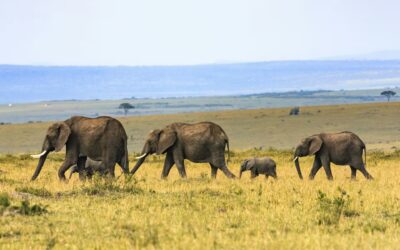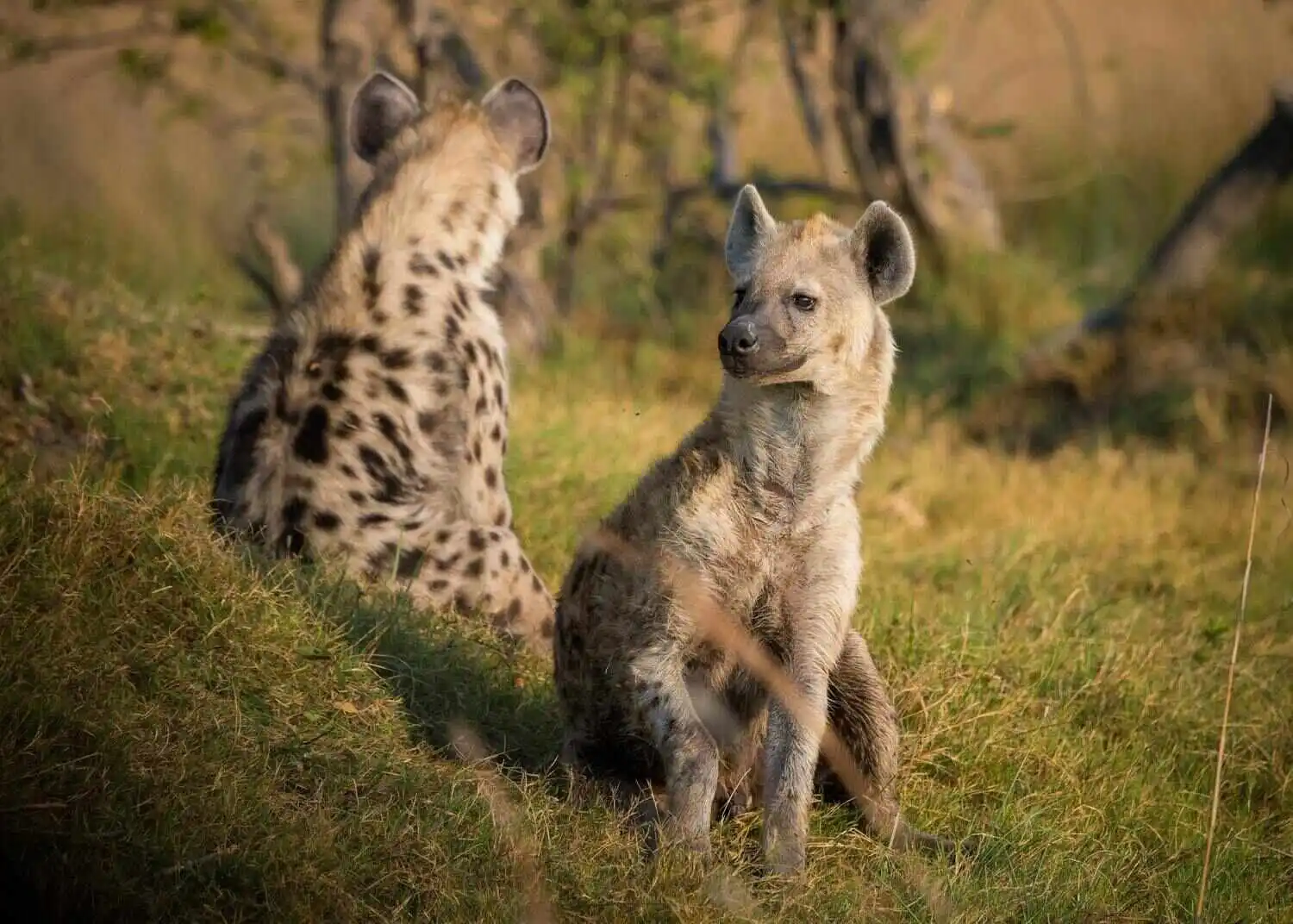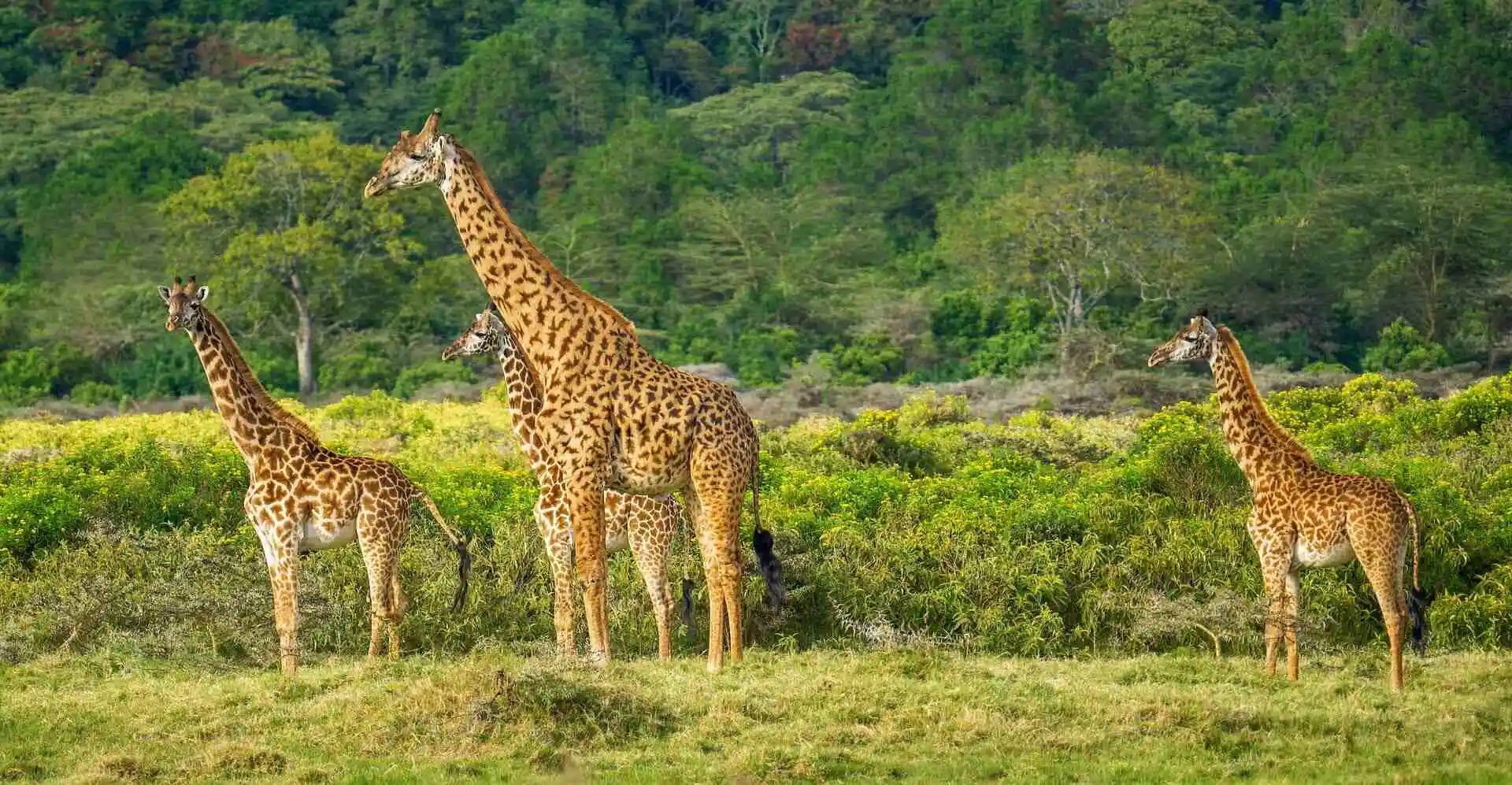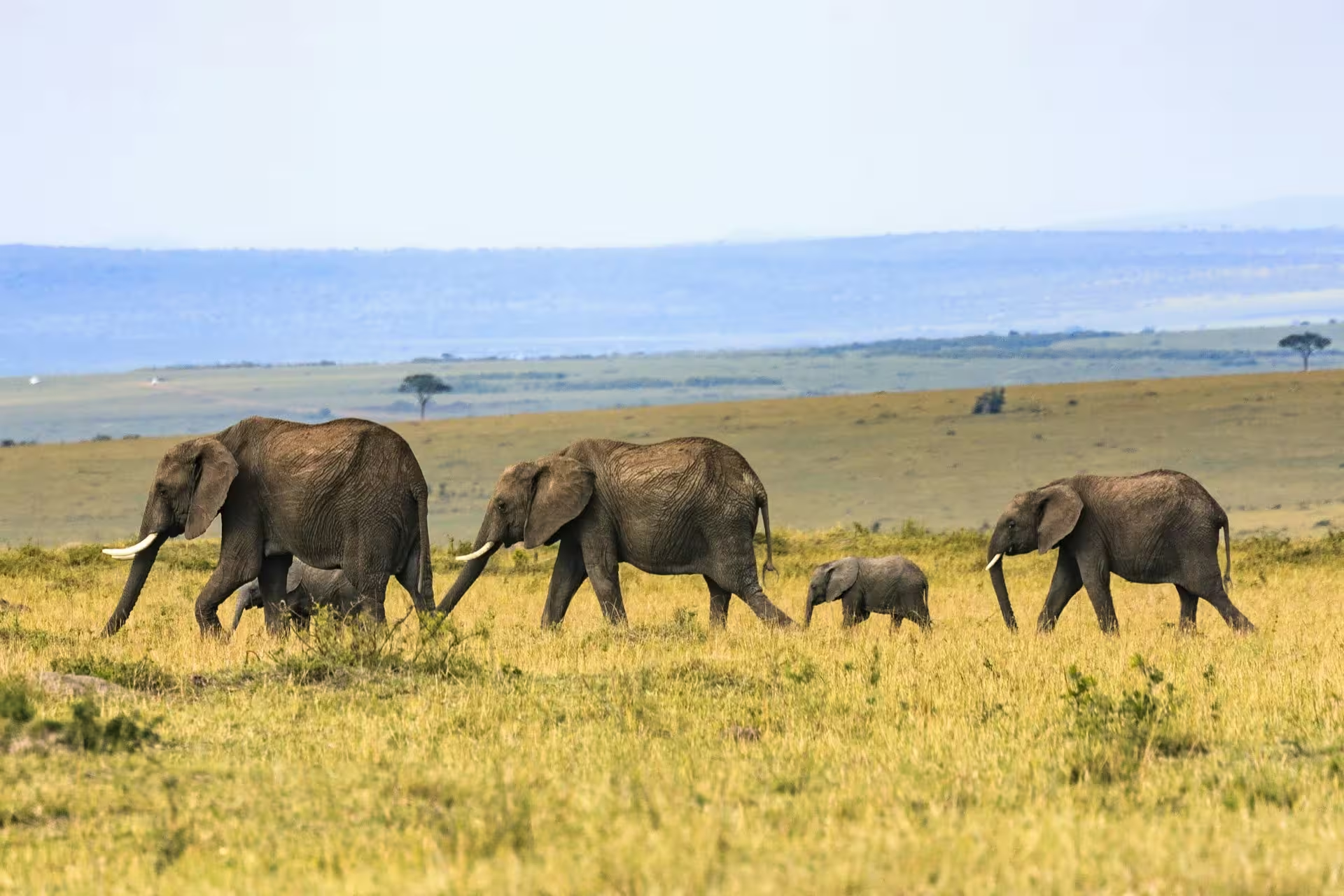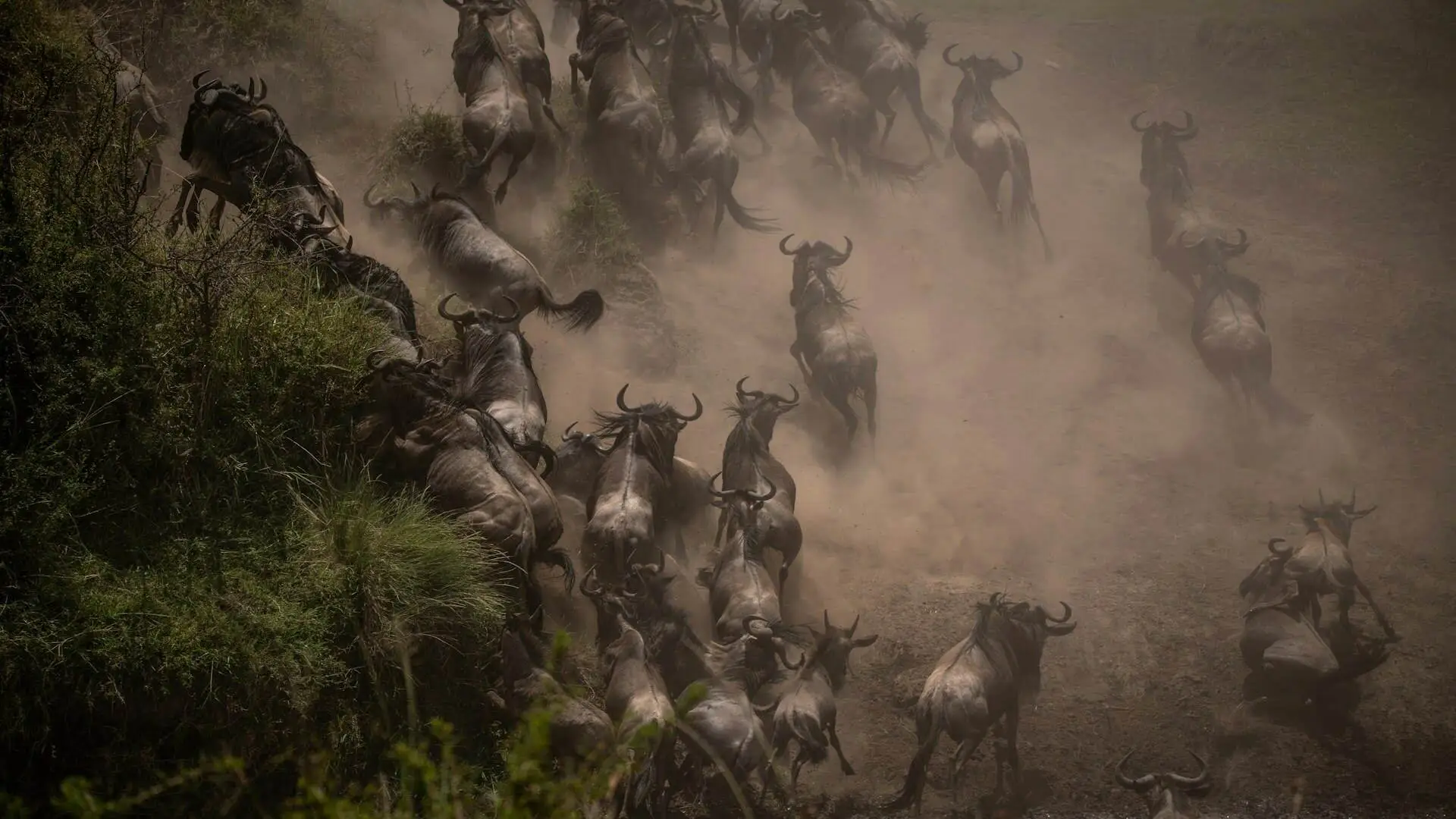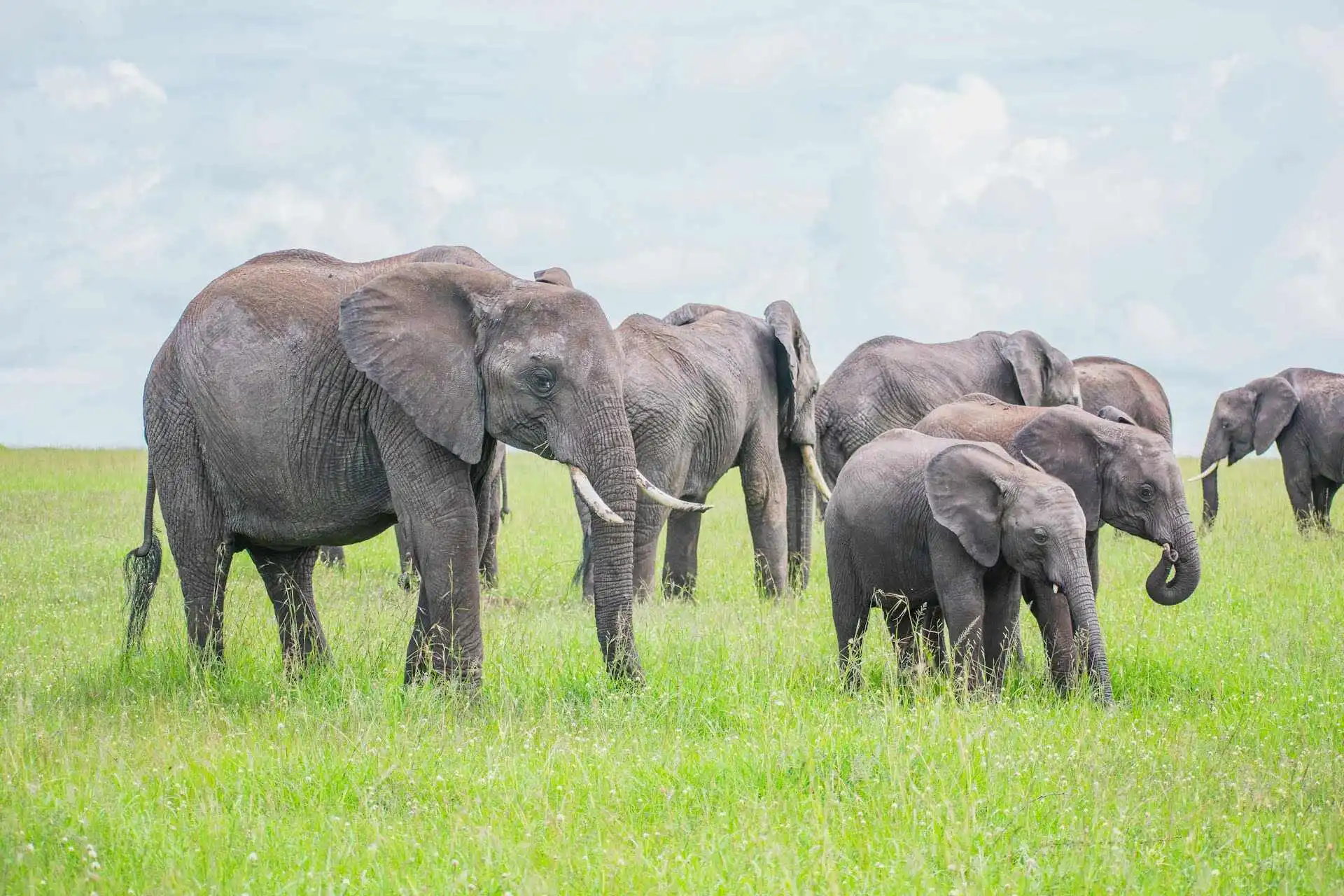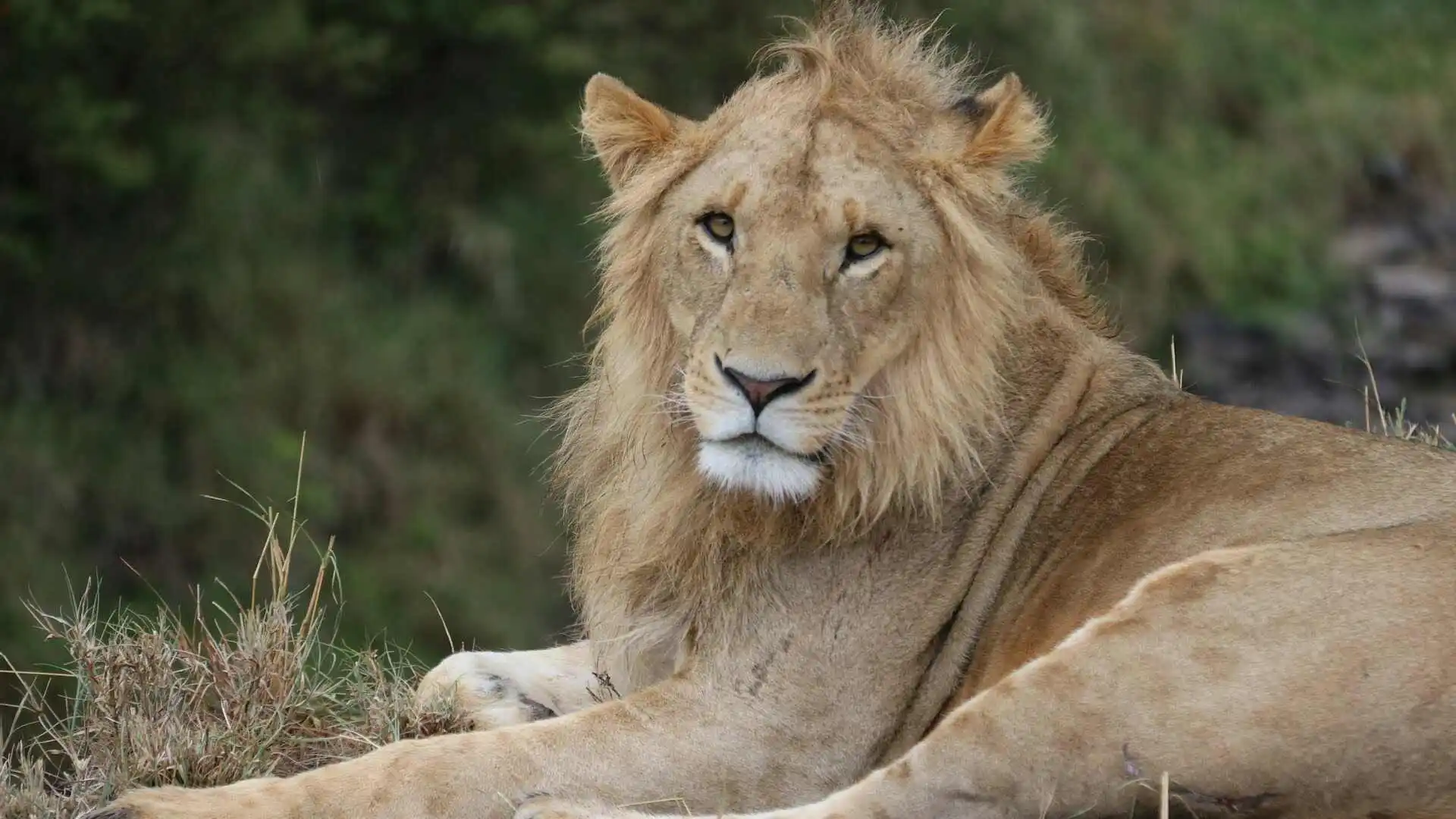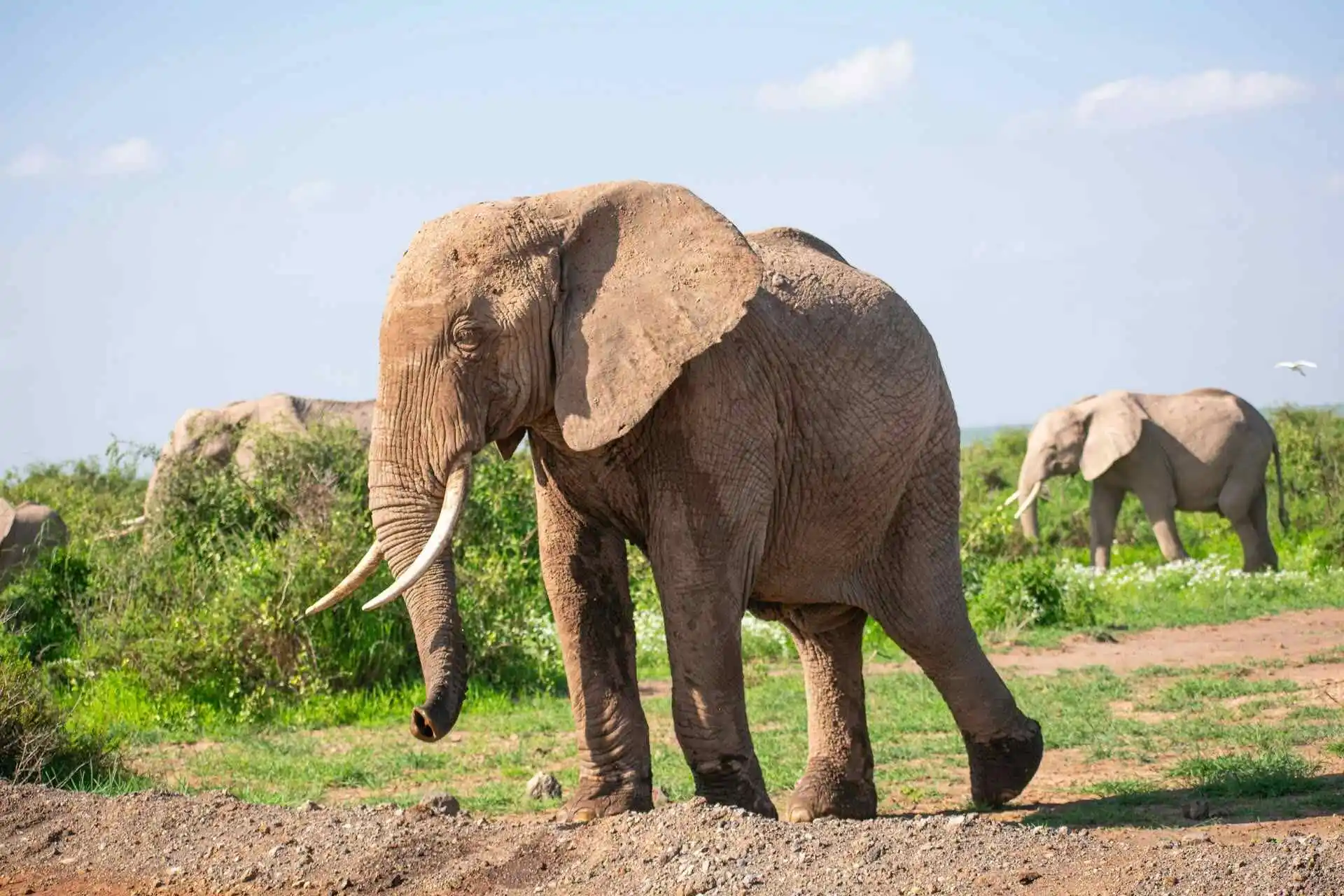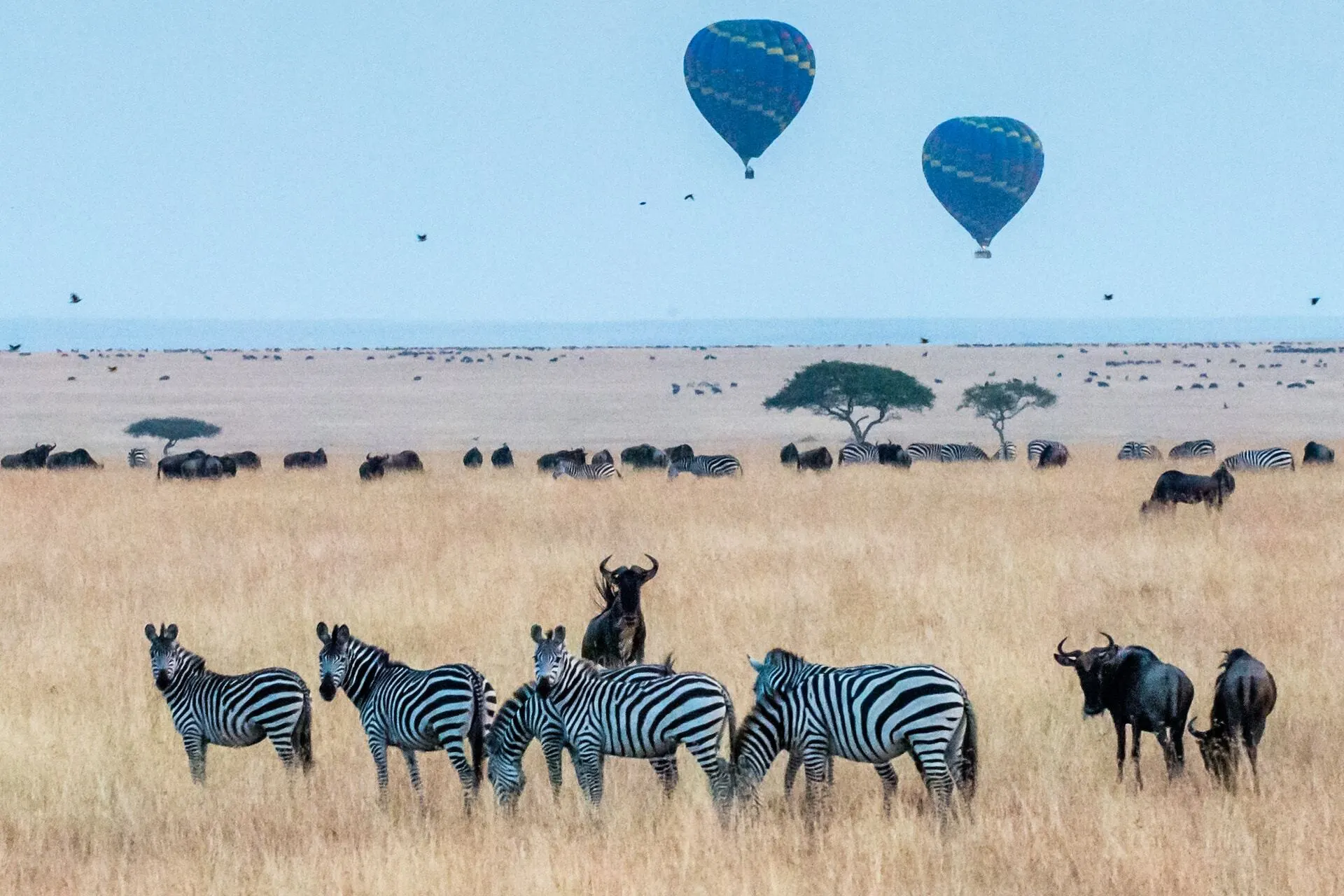Africa is famous for the Great Wildebeest Migration, but it’s just the tip of the iceberg. Across this vast continent, incredible wildlife movements unfold every year. These hidden wildlife spectacles offer equally breathtaking experiences, often with fewer crowds and more intimate viewing opportunities.
From zebras crossing the Kalahari Desert to ten million bats darkening Zambian skies, Africa’s alternative migrations showcase nature’s incredible diversity. Many of these phenomena actually involve larger numbers than the famous wildebeest migration, yet they remain Africa’s best-kept wildlife secrets.
Epic Wildlife Migrations in Africa
Let’s dive into some of the most jaw-dropping wildlife migrations across Africa that are every bit as spectacular as the wildebeest march across the Serengeti.
The Great Zebra Migration (Botswana)
Botswana’s zebra migration covers 500 kilometers, making it Africa’s longest land animal journey. These hardy striped travelers follow ancient routes between the lush Okavango Delta and the mineral-rich Makgadikgadi Pans, crossing harsh Kalahari terrain that would challenge any GPS system.
What makes this migration particularly special is its precision—zebras navigate using landmarks, star patterns, and magnetic fields their ancestors relied on for thousands of years. The journey tests every zebra’s endurance as they traverse areas with limited water sources and face predators throughout the route.
Where to Witness: Botswana’s Makgadikgadi Pans National Park and Central Kalahari Game Reserve offer the best viewing opportunities. The salt pans provide dramatic backdrops for photography.
Best Time: November to April brings the wet season movement northward, while May to October sees the return journey south. The crossing points near Boteti River offer particularly spectacular viewing.
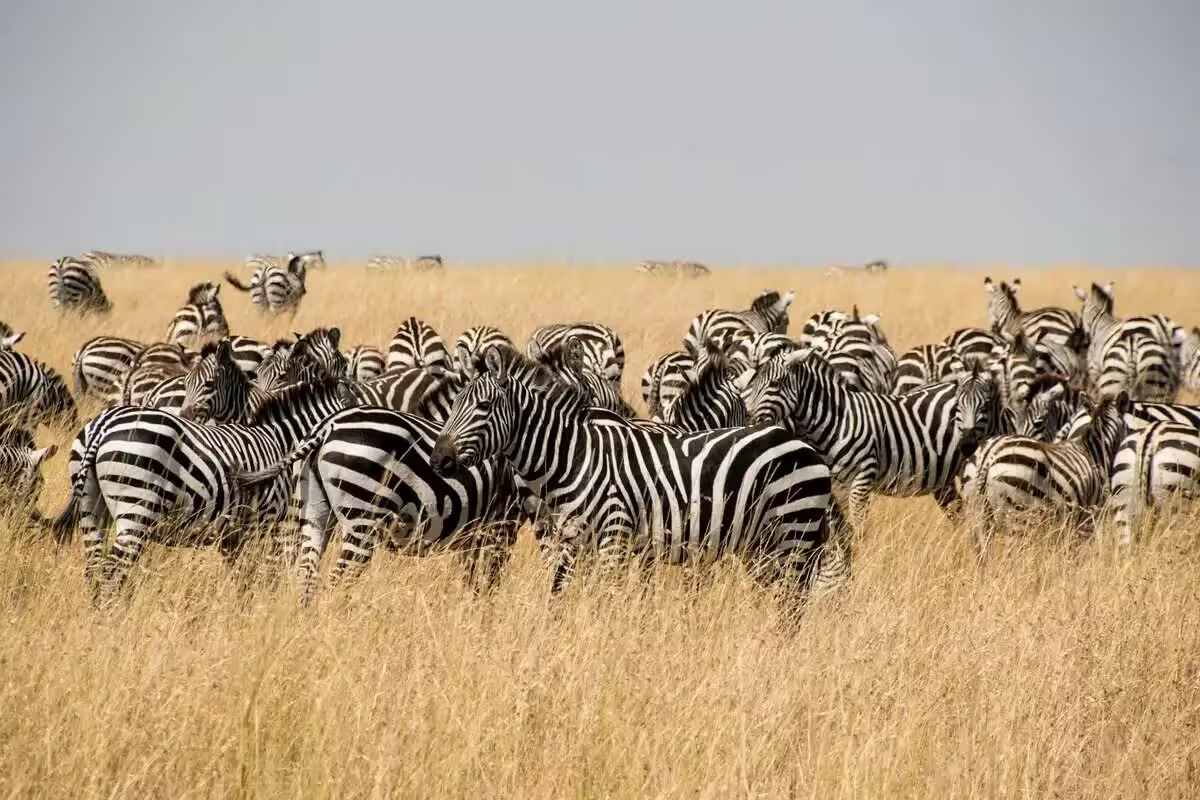
Elephant Seasonal Movements
Africa’s elephant migrations represent some of the continent’s most ancient wildlife corridors. These gentle giants follow routes established over millennia, with some families traveling hundreds of kilometers between seasonal feeding grounds. The sheer size of these herds—sometimes numbering in the thousands—creates unforgettable safari moments.
Modern elephant migrations face increasing challenges from human encroachment, making successful conservation efforts even more remarkable. Countries like Botswana have created transboundary conservation areas that allow elephants to maintain their traditional movement patterns.
Where to Witness: Botswana’s Chobe to Linyanti corridor hosts Africa’s largest elephant concentrations. The Zimbabwe-Zambia border region and Kenya-Tanzania Amboseli ecosystem also offer spectacular viewing.
Best Time: May to October concentrates elephants around permanent water sources, while November to March sees dispersal movements across wider territories.
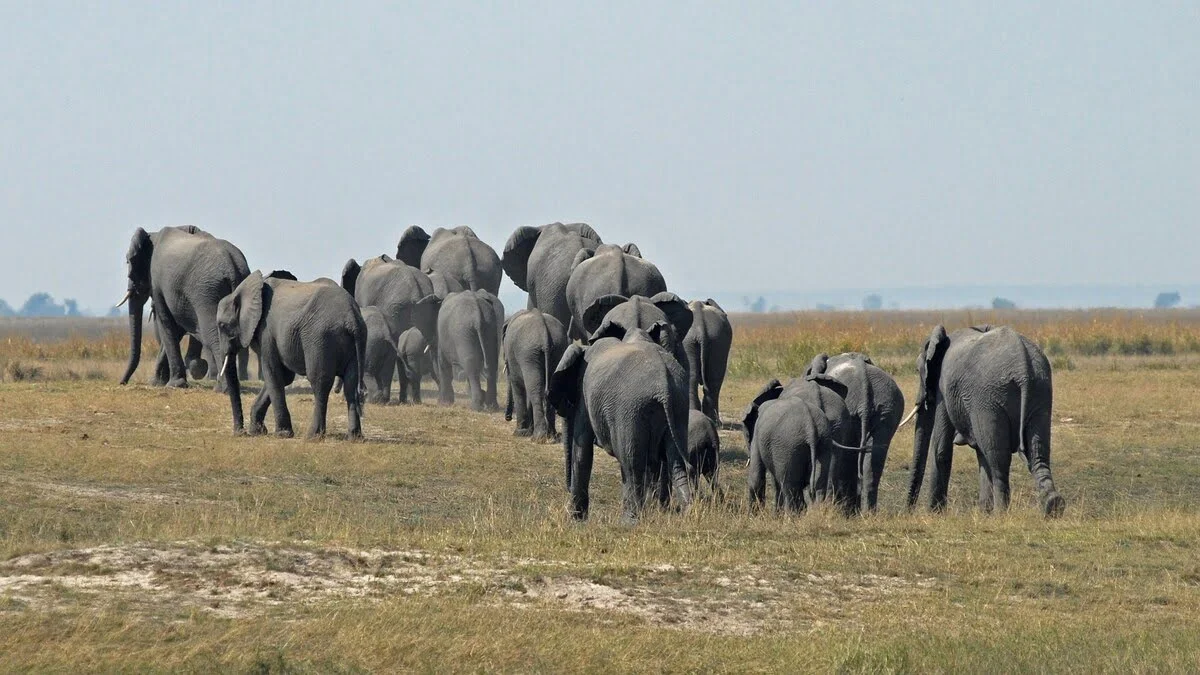
Lesser Flamingo Migrations
Millions of lesser flamingos create some of Africa’s most surreal wildlife spectacles, transforming alkaline lakes into seas of pink. These birds follow unpredictable patterns based on water levels, algae blooms, and breeding conditions, making each sighting feel like discovering a natural treasure.
The flamingo migrations showcase nature’s adaptability—these birds can detect suitable feeding conditions from hundreds of kilometers away and arrive at lakes within days of optimal algae blooms. Their synchronized movements create living pink carpets that shift and flow like animated artwork.
Where to Witness: Kenya’s Lake Nakuru and Lake Bogoria, Tanzania’s Lake Natron and Lake Manyara, and Ethiopia’s Lake Abijatta host the largest concentrations.
Best Time: Year-round opportunities exist, but peak numbers vary by lake. July to January typically provides the most reliable viewing across East Africa.
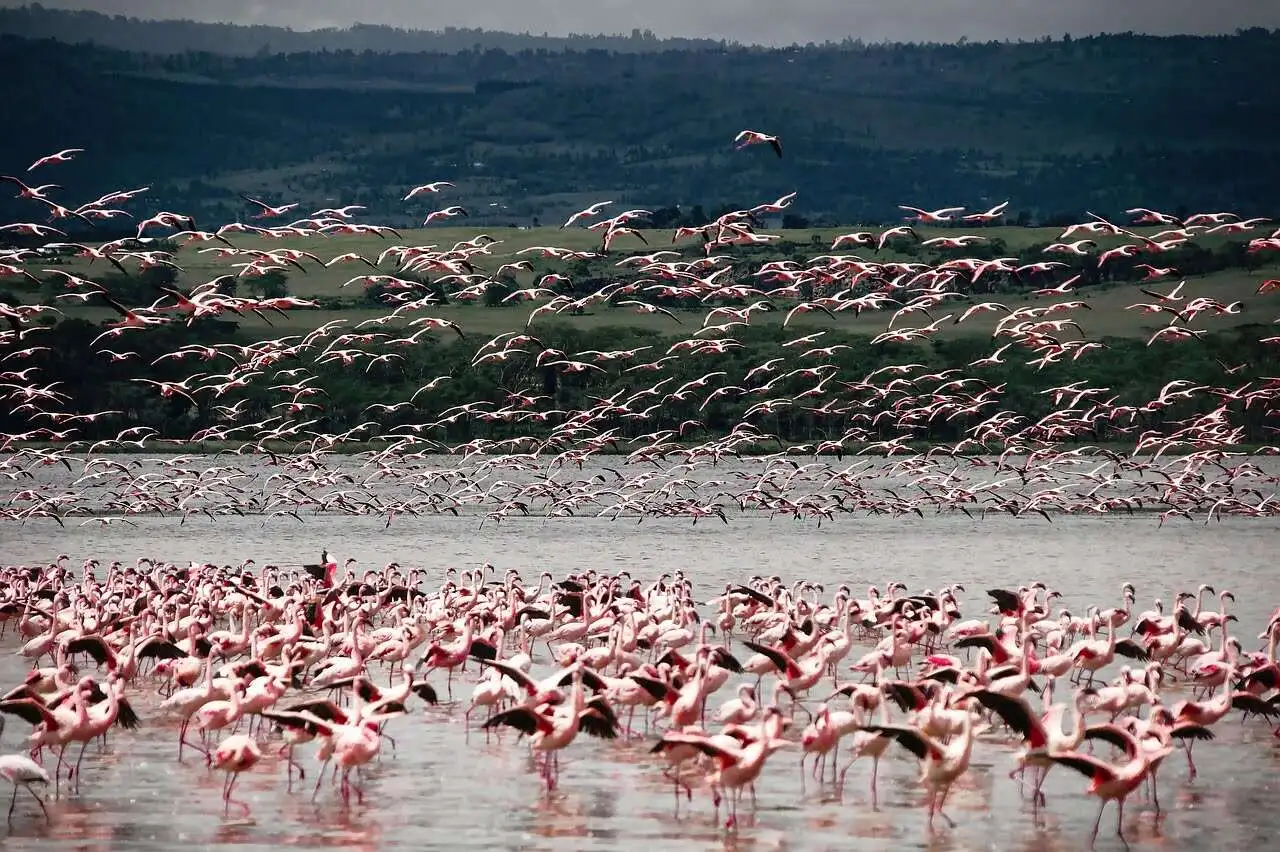
Fruit Bat Migrations (Zambia)
Kasanka National Park in Zambia hosts one of the world’s largest mammal migrations—ten million straw-colored fruit bats descending on just 30 square kilometers of swamp forest. The spectacle defies belief as continuous streams of bats darken the sky from sunset to sunrise.
This migration demonstrates nature’s incredible timing precision. Bats arrive exactly when wild fruits ripen, creating a feeding frenzy that supports one of Africa’s highest concentrations of wildlife per square meter. The sound alone—millions of wings and calls—creates an otherworldly experience.
Where to Witness: Zambia’s Kasanka National Park offers the world’s only reliable viewing location for this phenomenon.
Best Time: October to December, with peak numbers typically occurring in November when fruit availability reaches maximum levels.
Buffalo Herds on the Move
African buffalo create some of the continent’s most impressive mass movements, with herds sometimes stretching to the horizon. These powerful animals follow seasonal patterns that concentrate them around water sources during dry months, then disperse them across vast territories when rains return.
Buffalo migrations offer incredible predator-prey interactions as lions, hyenas, and crocodiles follow the herds. The drama rivals anything seen during the Great Migration, with river crossings and predator attacks creating constant excitement.
Where to Witness: Botswana’s Savuti-Linyanti corridor, South Africa’s Kruger National Park, and Tanzania’s remote Katavi National Park host the largest buffalo congregations.
Best Time: May to October concentrates herds around permanent water, while November to April sees dispersal patterns across wider ranges.
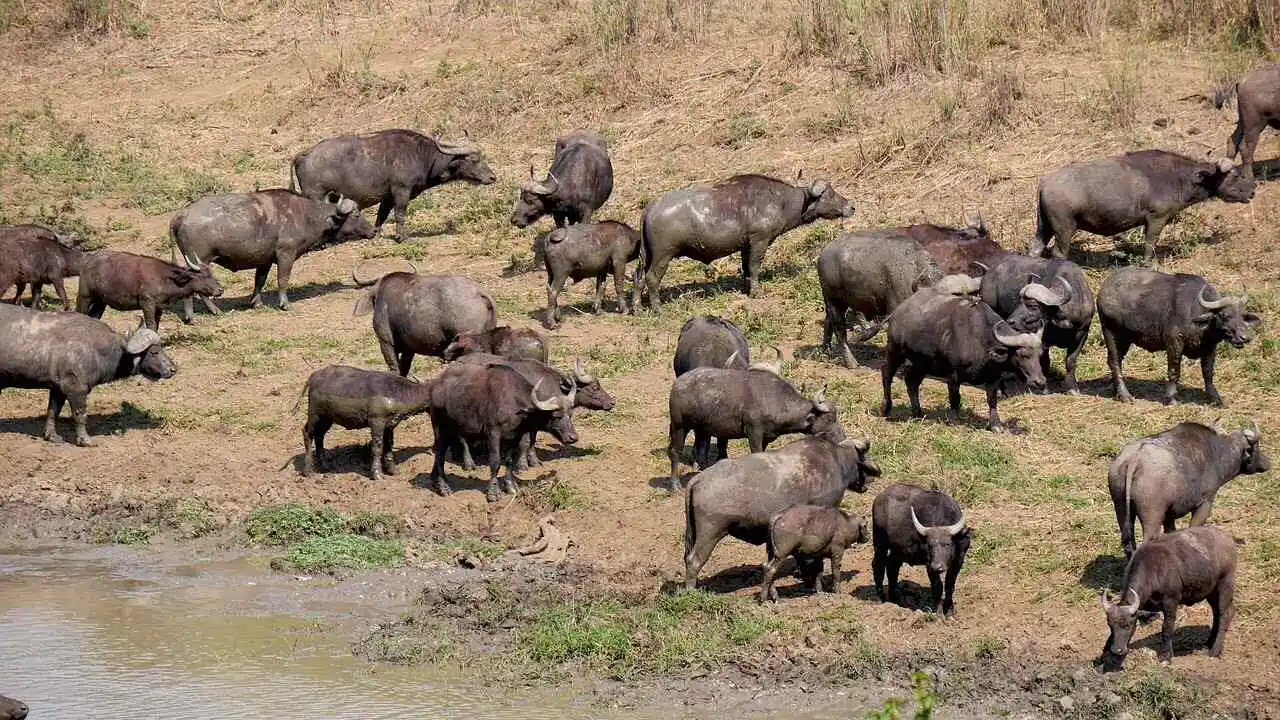
Antelope Mass Movements
The Kalahari’s springbok migrations can involve hundreds of thousands of animals moving across desert landscapes in search of fresh grazing. These movements often occur unpredictably, triggered by drought conditions or exceptional rainfall that creates temporary grasslands.
Historical accounts describe springbok migrations numbering in the millions, creating rivers of antelope flowing across the landscape for days. While modern migrations are smaller, they still provide spectacular viewing opportunities for lucky safari-goers.
Where to Witness: Botswana and South Africa’s Kalahari regions, plus Namibia’s areas surrounding Etosha National Park.
Best Time: Irregular timing makes these migrations unpredictable, but they typically occur during drought years or following exceptional rains.

Red-Billed Quelea Super Flocks
Red-billed queleas form the largest congregations of land animals on Earth—flocks can contain billions of birds that create living tornadoes in the sky. These massive formations follow seasonal grain availability across sub-Saharan Africa, with individual flocks sometimes stretching for kilometers.
Watching quelea flocks requires patience and timing, but the payoff is extraordinary. The birds move as a single organism, creating patterns that shift and flow like aerial murmurations. Their sheer numbers make every other wildlife spectacle feel small by comparison.
Where to Witness: Botswana, South Africa, Tanzania, and Kenya host major quelea movements, following agricultural seasons and wild grain availability.
Best Time: Post-harvest seasons vary by region, but generally March to August provides the best viewing opportunities.
Planning Your Alternative Migration Safari
These alternative migrations offer several advantages over the famous Great Migration. Smaller crowds mean more intimate wildlife experiences and better photography opportunities. Many of these spectacles occur in less-visited areas, giving you a sense of discovery that’s hard to find in popular safari destinations.
The unpredictable timing of many migrations adds excitement to your planning. Unlike the relatively predictable wildebeest movements, spotting a butterfly migration or quelea super flock requires flexibility and local knowledge—exactly what our experienced guides provide.
Ready to Discover Africa’s Hidden Migration Spectacles?
Contact us today to plan your exclusive wildlife adventure—these extraordinary migrations won’t stay secret forever!




